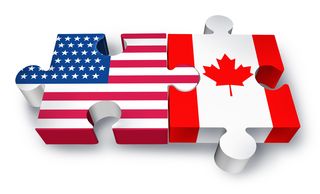The United States — Canada Data Exchange
The United States — Canada Data Exchange

The United States and Canada enjoy an economic partnership unique in the world. The two nations share the world’s largest and most comprehensive trading relationship. Did you know that the two countries also share an agreement to exchange import statistics? That’s right, In July 1987, Canada and the U.S. signed a Memorandum of Understanding to exchange import statistics starting with January 1990 data. In essence, each country shares its import data to be used as the other country’s export data.
There are four agencies involved in the United States-Canada Data Exchange. Each country has one statistical agency and one customs agency. The agencies include:
- U.S. Census Bureau
- U.S. Customs & Border Protection
- Statistics Canada
- Canada Border Services Agency
So how does this data exchange affect the common exporter you may ask? Prior to the data exchange both Canada and the United States derived their export statistics from export declarations filed by exporters at individual customs ports. As a result of the data exchange, the two statistical agencies now rely on the import statistics of the counterpart country to be used as their export statistics. This means that most shipments to Canada are exempt from filing in the Automated Export System under “Canada Exemption (30.36),” thus reducing the reporting burden on exporters. Now I’m pretty sure that is music to your ears! Just keep in mind that certain shipments destined to Canada must still be filed, and that exports moving from the U.S. through Canada to a third destination must also be filed in AES, Exemption for shipments to Canada.
In many ways, the United States and Canada are ideally suited for a data exchange. The two share a land border that is geographically isolated, so that bilateral trade generally flows directly from one to the other. They share a common language and are located in the same time zones, both of which facilitate frequent, informal and unscheduled communication between working level staff. Furthermore, the governments are similar and cooperative, so they are able to work closely together.



